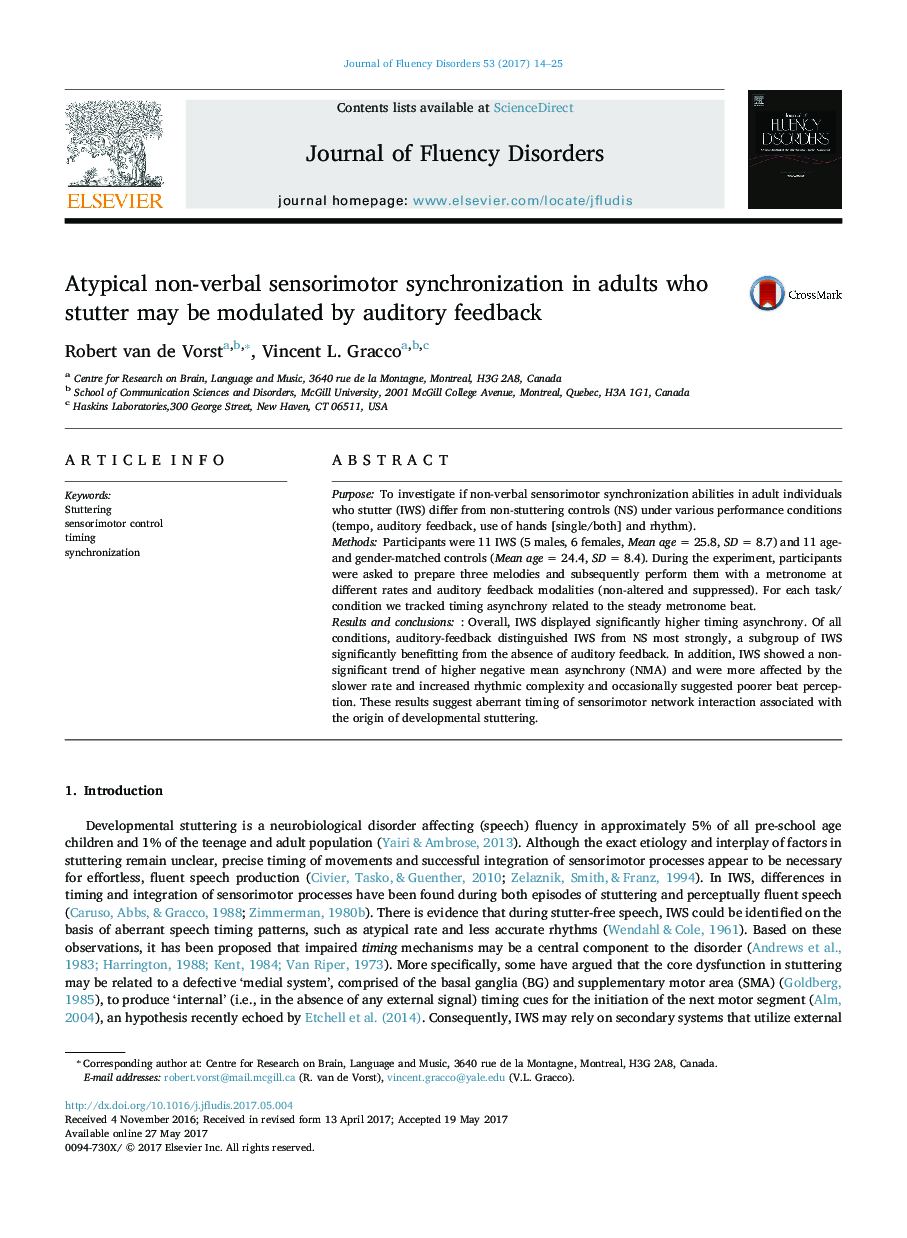| Article ID | Journal | Published Year | Pages | File Type |
|---|---|---|---|---|
| 5039141 | Journal of Fluency Disorders | 2017 | 12 Pages |
â¢IWS display significant higher timing asynchrony.â¢Absence of auditory feedback may improve performance in some IWS.â¢IWS show a non-significant trend of higher negative mean asynchrony (NMA).
PurposeTo investigate if non-verbal sensorimotor synchronization abilities in adult individuals who stutter (IWS) differ from non-stuttering controls (NS) under various performance conditions (tempo, auditory feedback, use of hands [single/both] and rhythm).MethodsParticipants were 11 IWS (5 males, 6 females, Mean age = 25.8, SD = 8.7) and 11 age- and gender-matched controls (Mean age = 24.4, SD = 8.4). During the experiment, participants were asked to prepare three melodies and subsequently perform them with a metronome at different rates and auditory feedback modalities (non-altered and suppressed). For each task/condition we tracked timing asynchrony related to the steady metronome beat.Results and conclusions: Overall, IWS displayed significantly higher timing asynchrony. Of all conditions, auditory-feedback distinguished IWS from NS most strongly, a subgroup of IWS significantly benefitting from the absence of auditory feedback. In addition, IWS showed a non-significant trend of higher negative mean asynchrony (NMA) and were more affected by the slower rate and increased rhythmic complexity and occasionally suggested poorer beat perception. These results suggest aberrant timing of sensorimotor network interaction associated with the origin of developmental stuttering.
